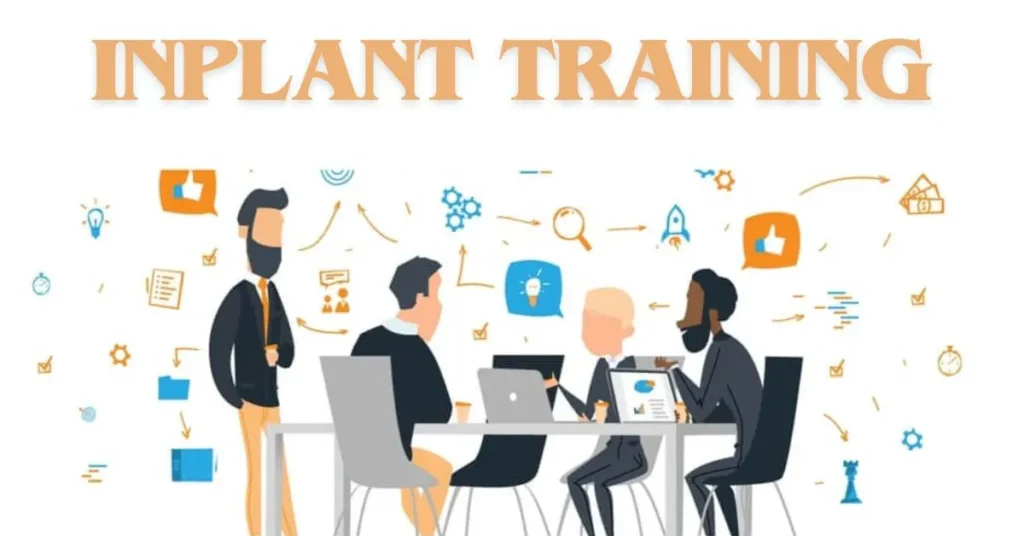Are you a student looking to gain real-world experience while still in school? Or perhaps an employer seeking fresh talent with hands-on skills? In either case, inplant training might be just what you need. This essential guide will walk you through everything you need to know about inplant training, why it’s beneficial, and how you can make the most out of this incredible opportunity.
What is Inplant Training?
Inplant training is a short-term, practical training program designed to give students firsthand experience in the industry related to their field of study. Unlike traditional internships, inplant training focuses more on providing a comprehensive understanding of the day-to-day operations within a company.
During inplant training, students get to observe and participate in various processes, from planning to execution. This exposure helps bridge the gap between theoretical knowledge gained in classrooms and practical application in real-world scenarios. It’s a win-win situation: students enhance their skills, and companies benefit from fresh perspectives and potential future employees.
How Inplant Training Works:
Typically lasting from a few weeks to a couple of months, inplant training programs are usually arranged through colleges and universities in collaboration with industry partners. Students often receive a structured training schedule that includes orientation sessions, hands-on activities, and project work.
By immersing themselves in the industry environment, students learn how to handle real challenges, use industry-specific tools, and understand workplace dynamics. This practical approach not only boosts their confidence but also makes them more attractive to future employers.
Benefits of Inplant Training:
For Students:
One of the most significant benefits of inplant training for students is the opportunity to apply classroom knowledge in real-world situations. This practical experience is invaluable and often helps clarify complex concepts learned during their academic courses.
Moreover, inplant training helps students build a network of professional contacts. Meeting and working with industry professionals can open doors to future job opportunities and provide mentorship from experienced individuals in their field.
For Employers:
Employers also gain numerous advantages from offering inplant training programs. They get access to a pool of enthusiastic and eager-to-learn individuals who can bring new ideas and energy into the workplace. This fresh perspective can sometimes lead to innovative solutions to existing problems.
Additionally, inplant training allows companies to evaluate potential future employees in a real-world setting. It’s a great way to assess a candidate’s skills, work ethic, and cultural fit before making a long-term hiring decision.
Choosing the Right Inplant Training Program:
Selecting the right inplant training program is crucial for maximizing the benefits. Here are some factors to consider:
Relevance to Your Field of Study:
Ensure the inplant training aligns with your academic background and career goals. A program closely related to your field of study will provide more meaningful and applicable experiences.
Company Reputation:
Research the reputation of the companies offering inplant training. Look for organizations known for their strong training programs and positive work environments. Reading reviews and asking for recommendations can help you make an informed decision.
Training Structure:
A well-structured training program is essential. Look for programs that offer a balance of theoretical knowledge and practical experience. A clear training schedule, defined goals, and mentorship opportunities can significantly enhance the learning experience.
Location and Duration:
Consider the location and duration of the training. Choose a location that is convenient and affordable for you. The duration should be long enough to provide substantial learning but short enough to fit into your academic schedule.
Making the Most of Your Inplant Training:
Once you’ve secured an inplant training position, it’s essential to make the most out of the experience. Here are some tips to help you maximize your learning and growth:
Be Proactive:
Take the initiative to learn as much as you can. Ask questions, seek feedback, and show interest in various aspects of the company’s operations. The more proactive you are, the more you’ll gain from the experience.
Network:
Build relationships with your colleagues and supervisors. Networking can provide valuable insights, mentorship, and future job opportunities. Don’t be afraid to engage in conversations and participate in company events.
Reflect and Document:
Keep a journal of your experiences during the inplant training. Reflect on what you’ve learned, the challenges you’ve faced, and how you’ve overcome them. This documentation can be useful for future job applications and interviews.
Seek Feedback:
Regularly seek feedback from your supervisors and peers. Constructive feedback can help you identify areas for improvement and guide your professional development.
Real-Life Success Stories:
Sarah’s Journey from Student to Professional:
Sarah, a computer science student, secured an inplant training position at a leading tech company. During her training, she worked on real projects, learned about software development processes, and networked with industry professionals. By the end of her training, Sarah had not only gained valuable skills but also received a job offer from the company. Her inplant training experience played a crucial role in launching her career.
John’s Experience in the Manufacturing Industry:
John, an engineering student, participated in an inplant trainning program at a manufacturing firm. He was involved in various stages of the production process, from design to quality control. This hands-on experience helped John understand the practical applications of his academic knowledge and develop a keen interest in manufacturing. After completing his training, John was offered a full-time position at the company, where he now leads a team of engineers.
Common Challenges and How to Overcome Them:
Adapting to the Workplace:
Adapting to a new work environment can be challenging. The key is to remain flexible and open-minded. Take the time to understand the company culture and work processes. Don’t hesitate to ask for help or clarification when needed.
Balancing Training and Academics:
Balancing inplant training with academic responsibilities can be demanding. Effective time management is crucial. Plan your schedule carefully, prioritize tasks, and communicate with your academic advisors and supervisors to ensure you can meet all your commitments.
Dealing with Feedback:
Receiving feedback, especially if it’s critical, can be tough. However, it’s an essential part of the learning process. Embrace feedback as an opportunity to grow and improve. Reflect on the feedback, identify areas for development, and take actionable steps to enhance your skills.
The Future of Inplant Training:
As industries continue to evolve, the importance of inplant traininng is likely to grow. With advancements in technology and changes in job requirements, hands-on experience will become even more critical for preparing students for the workforce.
Virtual Inplant Training:
The rise of remote work and digital technologies has paved the way for virtual inplant training programs. These programs offer flexibility and accessibility, allowing students to gain industry experience from anywhere in the world. Virtual training can include online workshops, remote project work, and virtual mentoring sessions.
Industry-Academia Collaboration:
Increased collaboration between educational institutions and industries will enhance the quality and availability of inplant trainning programs. Partnerships can lead to more tailored training opportunities, better alignment between academic curricula and industry needs, and improved career outcomes for students.
Conclusion:
Inplant training is a powerful tool for bridging the gap between education and industry. It provides students with practical experience, helps employers identify potential talent, and ultimately contributes to a more skilled and job-ready workforce. By choosing the right program, being proactive, and overcoming challenges, students can make the most out of their inplant trainning experience and set themselves up for a successful career. So, if you’re looking to gain a competitive edge and step into the professional world with confidence, consider embarking on an inplant trainning journey. It could be the key to unlocking your future potential.







